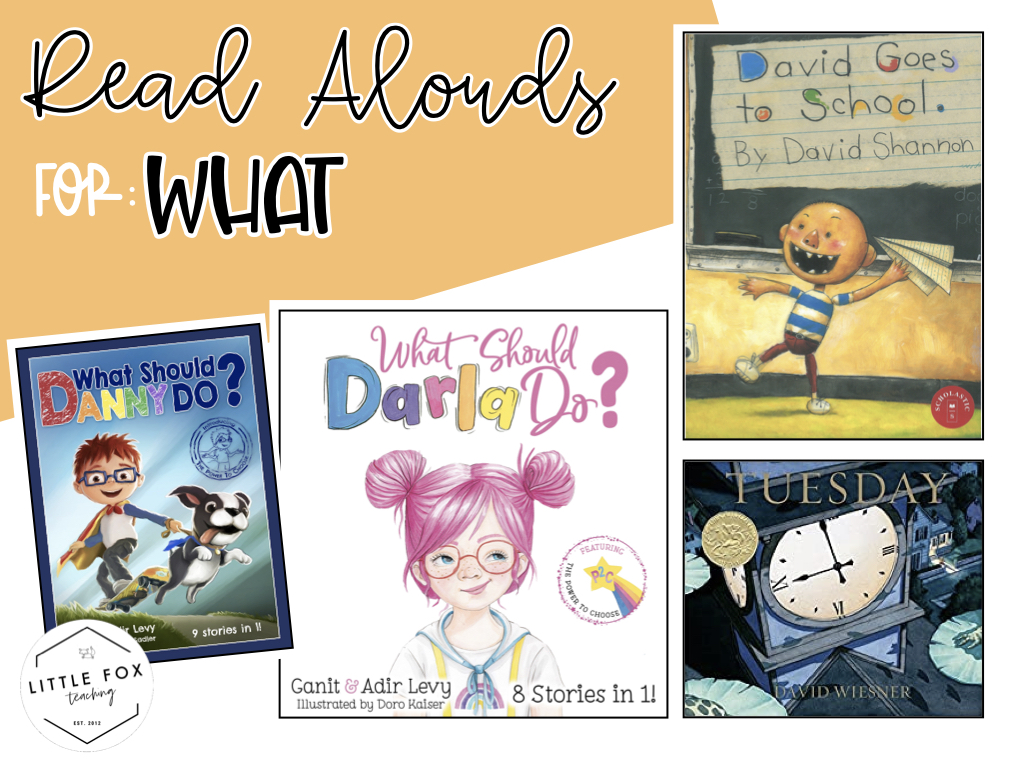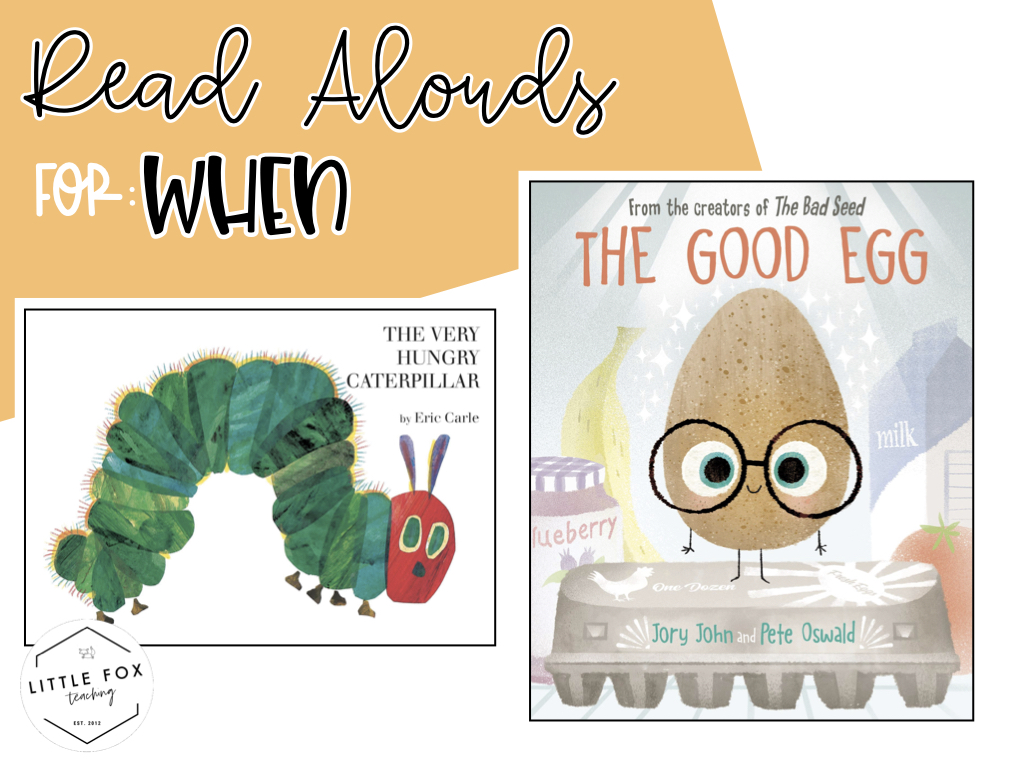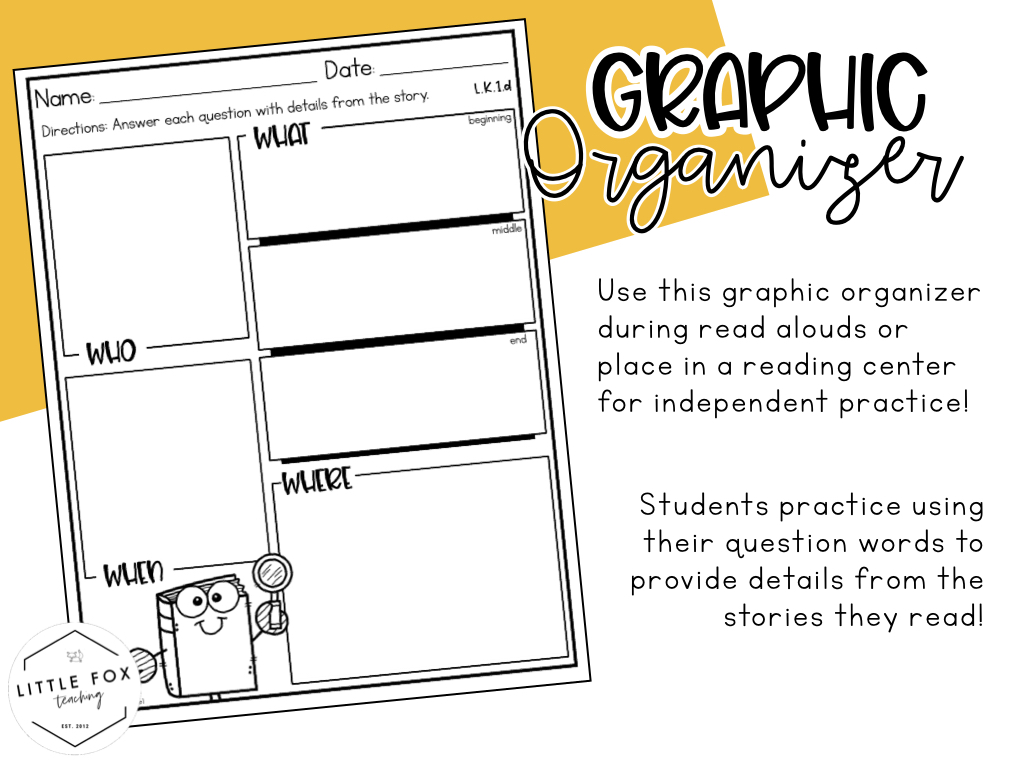This post may contain Amazon affiliate links. You can read my full disclosure here.
Being able to ask and understand questions is a cornerstone in any language. As an ELA teacher at French-American school, I get the unique opportunity to not only teach English to my students (a passion of mine!), but I get a glimpse as to how the French language is taught - which is fascinating. There's so much to learn and I love working where everyday brings something new and is an education, myself.
One of the first skills that are being explored at the beginning of the year in kindergarten are Speaking & Listening skills and Language. There are a number of different objectives within this domain, but the first one we'll tackle (and the one I'm sharing today) is being able to identify and understand question words.
These question words include:
- who
- what
- when
- where
- why
- how
To introduce this concept I love use mentor texts or read alouds. They are a wonderful way to reinforce the context by using real life author examples! Some of my favorites to include during this unit are:
Who: references a person or people
For this question word we can bring students' attention to the characters in a story. Any read aloud with strong characters and character traits will be best! Here are a couple of my favorites for the beginning of the year:
- The Girl Who Never Made Mistakes. This is a great story for those perfectionist students we often get in our classrooms! It's a great story that highlights the "who" in a story - in this case Beatrice. She has so many character traits that are easy to pick out for little learners.
- Ruby Finds a Worry. This is a great book with a female lead character who navigates a new emotion: worry. It not only helps identify the "who" in a story, but is a great reinforcer of what to do when a worry sneaks in.
- Ravi's Roar. Another great story from the author of Ruby above and a part of the Big Bright Feelings series. Ravi learns to identify and manage his feelings and makes for a great "who" identifier for this question word.
What: specifies something
- What Should Darla Do? This is a "choose your own adventure" story, which is sure to delight young readers! Darla wants to become an astronaut and the reader must help her make good choices in order to reach her goal. This is also a great story to read with your Hopes and Dreams lesson!
- What Should Danny Do? Same authors as the Darla series (and Danny is cousins with Darla) also writes a similar story with Danny!
- Tuesday. This is a great story because there really is no story to tell - that is, with words. I love that students get to interpret what they want from the illustrations and determine "what" the frogs and animals are doing.
- David Goes to School. A favorite amongst everyone! This story opens the discussion of what David does and the consequences he faces for those actions. Another great book to read at the beginning of the year to reinforce positive behaviors.
When: references a time or circumstance
Similar to "who", these read alouds for "when" will help students identify the time (time of day, past/present, etc.) or circumstance (the setting, at a party, etc.) of a story.
- The Very Hungry Caterpillar. This is a great intro, and familiar story, for students to learn "when" with days of the week.
- The Good Egg. This book is a great way to ask students to identify what they can do "when" they feel overwhelmed like the Good Egg in the story. The egg learns that he can meditate, relax, and even paint to help relieve some of the stress he's feeling.
Where: references a place or position
Teaching to "where" can lend itself to more than just the setting in a book (although, a great place to start). I love expanding on this idea of "where" to include prepositional words like: above, below, beside, etc. Here are a few books that incorporate both!
- Where the Wild Things Are.
- Yellow Ball. A great picture book that tells of the adventures of a missing ball that goes missing - yet finds its way home. The text features positional words that describe place and position.
- We're Going on a Bear Hunt. This popular song is in story form in this favorite children's book! The text features prepositional words as the reader has to navigate around obstacles on their bear hunt.
- Up, Down, and Around. This story features "where" words while hanging out in the garden. Also a great book during a seeds & plants unit!
Why: specifies for what reason or purpose
This is another question word that lends itself to so many wonderful read alouds! It also happens to be a question that young kids ask, themselves, the most. Encourage their curiosity with these fun stories:
- Why Should I...series.
- Why? This tells the story of a friendship between Bear and his curious friend, Rabbit, who is always asking him questions.
- The Day the Crayons Quit. This story is a humorous tale that presents the problem of Duncan's crayons quitting! In the story, they leave him little goodbye notes, which is a great way to discuss why each color decided to leave.
How: references a way or manner
You can go in a variety of directions with introducing the word "how." It can be literal with "how-to" books (and even lending itself to informative writing!)
- My Mouth is a Volcano. This is another great story for the beginning of the year because it helps students learn how they can control their impulse to interrupt!
- How to Catch a Mermaid. A fun "how-to" story that is sure to speak to all the girls in class! This helps students identify the way or manner in which someone can catch a mermaid! This series also includes how to catch a: unicorn, dinosaur, dragon, and monster for learning all throughout the year!
- How to Read a Story. This is another great read for the beginning of the year and having students learn to identify how they can enjoy reading all year long.
- How the Crayons Saved the Rainbow. The world experiences a problem when the sun and clouds, best friends, get into an argument and refuse to be in the same day together. because of this, rainbows no longer have the chance to shine and therefore the colors start disappearing! Students learn about perseverance and teamwork as the crayons help save the day!
Question Words Practice
In this resource you'll find our question words as an independent activity. Students practice writing these words and using them in a sentence. It's simple practice that can be done as a whole group, small group, or centers. Introduce the words once a day or all at once - up to you! They can even be used as homework practice as well.
Using graphic organizers to chart thinking
I love introducing graphic organizers to my littles in kindergarten and this can be easily modeled and used throughout the year to think about their reading. Of course, in kindergarten it's important to model and practice before expecting students be able to use it on their own. I would use this as a resource during my whole group teaching or even print it using a poster printer, laminate, and use throughout the year. For the older grades, you can model it then have it in a center or during independent work. It really comes down to your grade and needs of your class.
Last, but not least...posters!
To complete this Question Words resource I've included these simple and minimalistic posters to use during your lessons and to display in your classroom. They feature the main question words: who, what, when, where, why, and how as well as a poster for the punctuation: question mark. In kindergarten we don't really begin using them, just periods, but it's almost a have-to during a question words unit. At the very least, an honorable mention ;)
Happy teaching!













